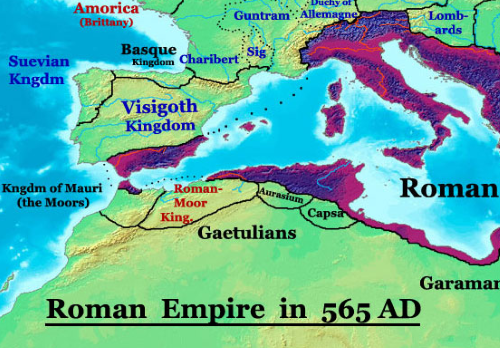Vaga, Vecca or Theodorias is an ancient city in Tunisia built by the Berbers and ruled sequentially by the Carthaginians, the Numidians, the Romans, the Vandals and the Byzantines until it was captured by the Arabs who changed its name to the present day Béja. The town was the capital of the Numidian Kingdom during the rule of Jugurtha.
The Vaga fortress was built in the 2nd century BC and still exists till today which makes it one of oldest citadels in the region.
The fortress was built on the top of a hill of 305 meters, and this site was chosen so the castle can overlook the city and its surrounding plains and countryside.
Little is known about the date of the foundation of Vaga, but it's sure that it was before the foundation of Carthage.
In 14 BC, the Romans demolished the old Carthaginian citadel and built a new one on the ruins of the previous and built also fortifications with walls and 22 towers.
The Romans erected many other monuments which some of them still exist today. And in 105 BC under the rule the Emperor Trajan, the Romans began the building of the bridge near Vaga, the constructions lasted nearly 25 years and event ended only under the reign of Emperor Hadrian and which become known as the Trajan bridge.
Vaga, still flourishing, was promoted by Emperor Septimius Severus to the rank of Roman colonia under the name of Colonia Septimia Vaga. The city continues its prosperity for nearly two centuries till the Vandal invasion of Africa.
The Vandals in 429 and under the leadership of Genseric stormed the Roman province of Africa and made it in 435 as their new kingdom, in their route they destroyed several cities, within them Vaga which was devastated. In 442, the Western Roman Emperor Valentinian III made peace with the Vandals giving them the land between the sea and the three cities of Theveste, Sicca Veneria and Vaga. And in 448 Genseric destroyed the fortifications of the city and dismantled its castle.
Rule By The Eastern Roman Empire
In 533, has the Eastern Roman Emperor Justinian I restored Africa as a Roman province and put an end to the Vandalic rule, and with that Vaga became a flourishing town again, as the Emperor charged the Count Paulus to leads the works to restore the fortress of the city back.
But the Emperor didn't only rebuilt the castle, but he also rebuilt the entire city which was ruined by the Vandal rule, and he enlarged, embellished and repopulate the city like it was before, and to be grateful for his actions, the townspeople had renamed their city after the Empress Theodora, Theodorias.
Because of the endless wars and incursions by the Moors Justinian ordered the building of a chain of forts along the frontier.
Behind this first line was a second barrier of larger towns and stronger garrisons. Watchmen on the first line used signal fires to alert the larger towns of barbarian invasions for locals could seek refuge inside the walled cities. Vaga was part of this system.
With the Muslim conquest of north Africa the new rulers of the country gave fortress the name "Kasbah" and made it the official center of their representatives of the northern-region.
The Ottomans too contributed to the expansion of the citadel by establishing a flanking tower that protected the southern parts of the Kasbah and Janissary garrison, and in 1677 the Tunisian monarch Ali I Bey supported the garrison by a battalion of 500 Spahis.
After the French occupation of Tunisia in 1881, the Kasbah become a Gendarmerie barracks from September 21, 1888 till the independence of the country in 1957.
By Procopius
The Buildings of Justinian
Written in the 550s AD
These things, then, were done by Justinian at modern Carthage. In the surrounding region, which is called Proconsularis, there was an unwalled city, Vaga by name, which could be captured not only by a planned attack of the barbarians, but even if they merely chanced to be passing that way. This place the Emperor Justinian surrounded with very strong defenses and made it worthy to be called a city, and capable of affording safe protection to its inhabitants. And they, having received this favour, now call the city Theodorias in honour of the Empress. He also built in this district a fortress which they call Tucca.
The Vandals had torn the circuit-wall of this city down to the ground, so that the Romans might not be able to use it against them. And it lay conveniently exposed to the Moors when they overran that region. Nevertheless, the Libyans who lived there tried to make provision, so far as they could, for their own safety, and so they made a barricade out of the ruins of the walls and joined their houses together; and from these they would fight against their assailants and try to defend themselves, though their hope was slight and their position precarious. So their safety always hung by a hair and they were kept standing on one leg, being exposed to the attacks of the Moors and to the neglect of the Vandals.






No comments:
Post a Comment